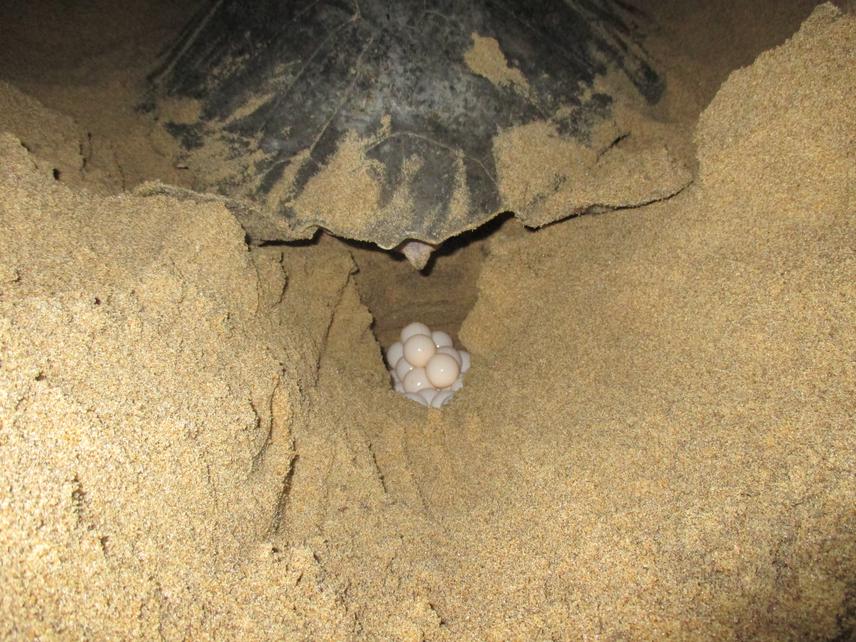Abi Henry Nibam
Other projects
15 Jun 2015
Evolutionary Ecology of Marine Turtle Species in the Face of Artisanal Fishing and Climate Change in the Atlantic Coastline of Ebodje, Cameroon
Four marine turtle species are attracted along the coastal beaches of the Ebodje nesting zone of southern Cameroon; adult female Lepidochelys olivacea and Dermochelys coriacea to nest (and more rarely Chelonia mydas), and juvenile Eretmochelys imbricata and Chelonia mydas to grow. Threats facing the species include; poaching, by-catch and climate change. This project aims at understanding the effect of climate change on sand incubation temperature during species nesting season. This will help to maximize production of healthy hatchlings of species, and establish/compile various integrated database for use in a long-term monitoring programs which could lead to species management strategies.

According to on-going conservation effort on the visiting marine turtle species on our nesting zones, there have been poor records of hatchling success in natural, relocated and hatchery nests. This has resulted to an observed reduction in species population rookeries in major nesting sites. Environmental stressors on the nests include; temperature, tidal inundation, sand grain size distribution, poaching, predation and growing root-hairs of coastal plants. Hence a need to enhance the protection of the species which are already classified as vulnerable endangered or critically endangered in the IUCN Redlist.
Our line of action for this work is geared toward the recovery of the species through maximizing production of healthy hatchlings. The study will introduce/strengthen climate change research- sand incubation temperature; an important environmental factor which is at its infancy. Given the threat that climate change poses to the recovery of this critically endangered population, we sought to keep accurate records of the temperature of the sand at 30 cm (average depth of Olive ridley nests in this population) during nesting season in five index beach zones, and to establish an integrated database of sand temperatures for use in long-term monitoring program. This will be making use of electronic data-loggers placed in actual nests on the different beaches and/or clutches relocated to protected areas, inorder to compare incubation conditions. This will assist to identify environmental changes that disturb the incubation microclimate, given the species sensitivity to temperature fluctuations. For instance, examining the role rainfall and storm events play in determining hatchling sex, developmental time, size, mass, amount of yolk content and locomotor performance for hatchlings. Also, it will help to monitor nesting trends and the actual environmental conditions that affect the production of hatchlings while protecting reproductive adults and clutches from poaching and predation.
The records of temperature in the different habitats will represent the range of nesting sites and positions on the beach. Also, it should be recalled that excessive rise in temperature due to global-warming result to some dryness of the sand used in covering the nests. This in tend support less metabolic activity of the developing embryo because of poor gas exchange. Climate change has been identified worldwide as a potential threat for the recovery of species population. Understanding changes in sand incubation temperature (compiled in a single/standardised database) over time, species ecology and variability with respect to natural and anthropogenic forcing is vital to suggest best management actions.